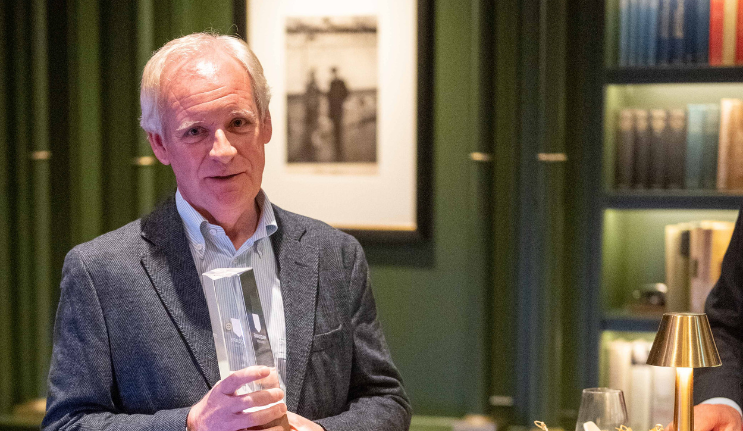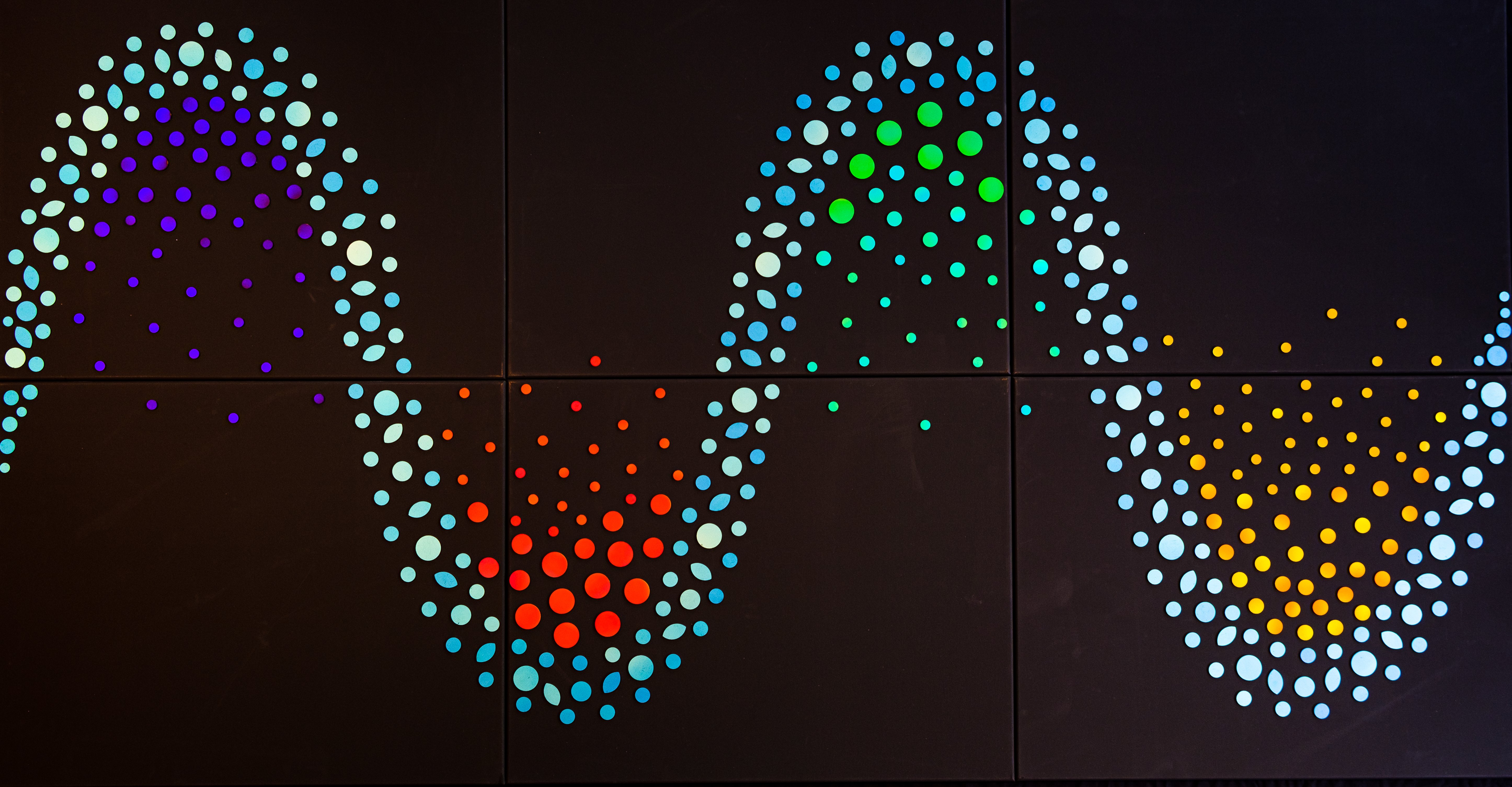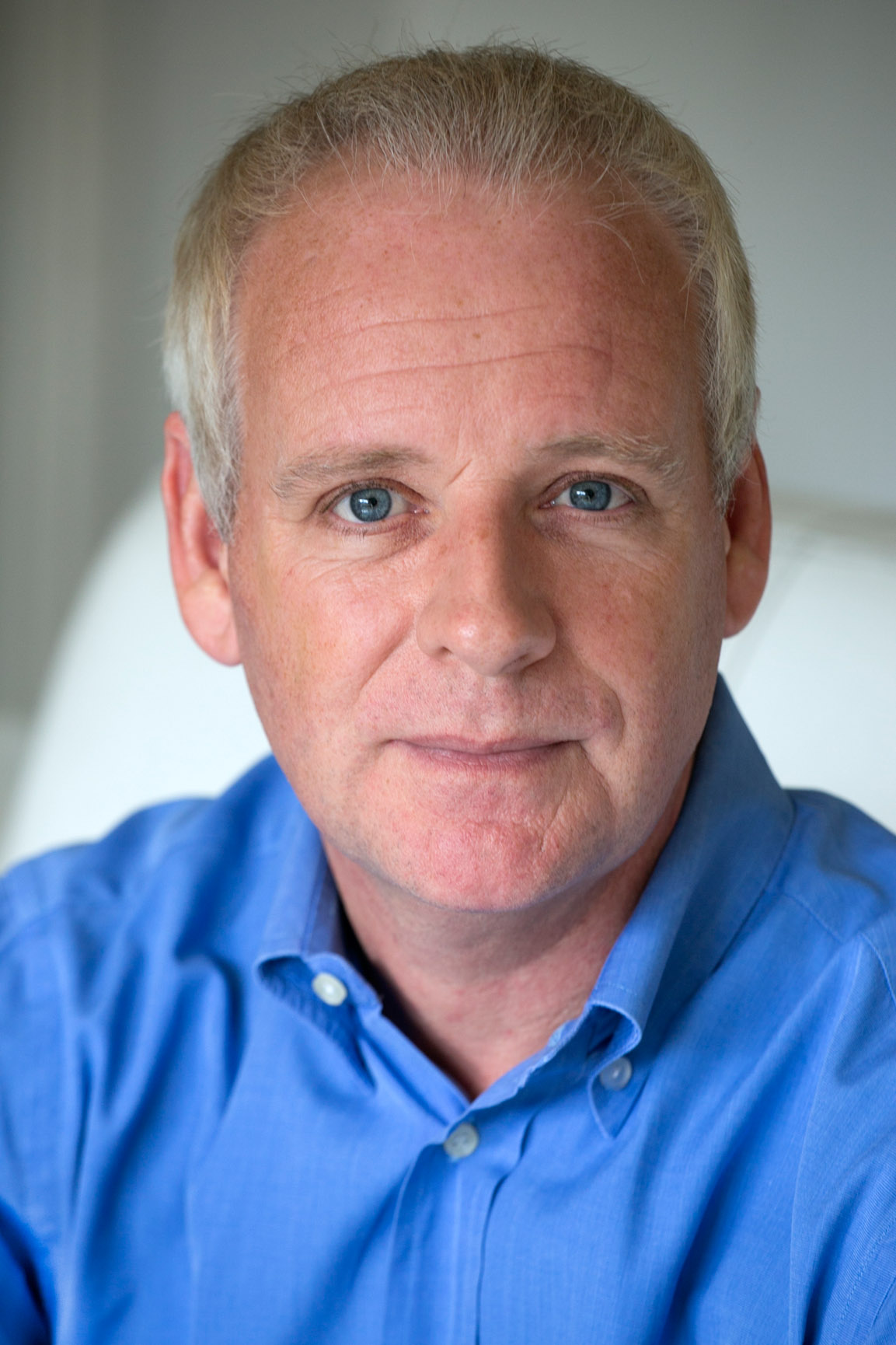
ALUMNI FOCUS
Nature as inspiration
Sometimes, we unwittingly seek the most difficult path when searching for a solution to a complex problem. Professor Andrew Parker – scientist, artist, Lifescaped founder and 2022 MQ Alumni Award Winner in the field of Innovation and Enterprise – takes a different tack. Expert in the field of biomimetics, simply learning from nature, Parker is harnessing the inherent intelligence and technology to be found in the natural world and transforming this knowledge into sustainable solutions that are elegant in their simplicity and profound in their impact.
There’s an easy calm to Professor Andrew Parker, and you get the feeling that with his insight, things will work themselves out; unfold as they should. It’s a gentle confidence that possibly stems from his great understanding of nature, and how plants and animals have evolved to work in the most efficient and beautiful way.
Still, what you hear most when you listen carefully to Parker’s English lilt is a gentle nudging for the world to do better, to use the knowledge of plants and animals, and Australia’s First Peoples no less, to make life on earth more sustainable. As he explains, ‘Evolution has produced the most energy-efficient solutions to the problems animals and plants face for their survival.
‘We can either copy these directly, or adapt them to fit with the challenges of the modern world,’ he says, referencing his broad body of research, which could, as but an example, make airplanes lighter so they need less fuel, and produce sunscreens that don’t harm marine life.
‘The more people hear about biomimetics, or what I call bio-inspiration, the more they’re going to like the idea and, hopefully, it will grow,’ he says with quiet optimism, which is not surprising given the trajectory of Lifescaped, Parker’s art studio and science lab that turns biomimetics research into different products.
‘Making these innovations legible to industry and ready for business has been very exciting – at university, you don’t normally venture beyond the theoretical stage,’ notes Parker, whose research moved into the commercial sphere when HRH Prince Charles visited his lab in Oxford.
‘We were copying nature to make different devices and showed him a prototype of a beetle, a water-collecting device. I remember Prince Charles saying, “This is all great, but where are the commercial products? Where can people buy these things?”’
Slightly taken aback, Parker thought, That’s not what we do at university. ‘But he was right; he had a point,’ he says, explaining how Prince Charles then invited him to become one of his science advisors and introduced him to the business community in the City of London, which in turn helped launch Lifescaped.
‘Prince Charles has been a huge supporter, and now we’ve established some successful cases, he can help bring it to the public’s attention,’ he says, and indeed the two are a natural pairing. ‘Biomimetics aligns with Prince Charles’s philosophy and the concepts in his book, Harmony.
‘It was thanks to his involvement that everything changed,’ acknowledges Parker. ‘Suddenly, we had business plans, we were making prototypes that could be scaled up, and we were working on how to get the technology into commercial products.’
Environmentally friendly ones, of course, although Parker does admit there were a few learning curves along the way. ‘The financial and legal implications were an important part, for example, but we now have patents in different countries worldwide, as well as other intellectual property.’
Among Lifescaped’s innovations, one of the most significant – and visually stunning – is the creation of Pure Structural Colour, the brightest colour that exists on earth. ‘Rather than a pigment-based colour, it’s a colour based in technology,’ explains Parker with justifiable pride in his discovery, which was inspired by working in Australia for Macquarie University and the Australian Museum.
‘I noticed the colours underwater on the Great Barrier Reef, for example, were much brighter than those found in commerce, and went on to replicate how this occurs using completely transparent materials.’
It sounds complicated at first, but Parker explains, ‘The micro- and nano-structures in the material interact with light rays, so when white light comes in, the rays of just one colour are reflected, creating the most luminous colours.’
If you’ve ever been drawn to the neon orange of a tropical fish or the iridescent blue of a peacock’s plumage, you’ll understand the intensity of Pure Structural Colour and the emotional reaction colour can evoke. Unsurprisingly, everyone is interested in this spectacular technology, from Nike to plane and boat manufacturers.
‘The applications for it are incredible,’ enthuses Parker. ‘At the moment, we can coat a surface, but we’re trying to develop the paint version. It’s a lot thinner than traditional paints, so it will save a tonne of weight if used on a jumbo jet, which results in a large fuel saving.’
But it’s not all business and science for Parker, who also draws on his background as a fine art student of abstract expressionism. Keen to share Pure Structural Colour with the public, he held a successful art exhibition, Naturally Brilliant Colour, at Kew Gardens in London last year, which will travel on to Los Angeles next.
Parker says there’s nothing quite like seeing large pieces of Pure Structural Colour displayed in different hues. ‘They completely drown out your visual system. When you look at them, you’re completely drawn in; they’re absolutely mesmerising.
‘But, there’s a reason for that,’ he points out with his characteristic enthusiasm. ‘Visual systems have evolved to react in that way toward this type of colour,’ he says, referencing his discovery that the evolution of image-forming eyes, and vision in animals, triggered the Cambrian explosion – the Big Bang of evolution.
There’s no doubt Parker’s research forms a kaleidoscope of learnings and applications, but his love for all things bright and beautiful (including Sydney) was cemented when he came to study for a PhD in marine biology and physics at Macquarie University in 1993.
‘I’ve always been fascinated with colour,’ he admits, ‘But when I saw the incredible colours underwater in Australia, I suddenly thought, I’ve got to work on this, and changed my PhD to focus on colour.’
It was the beginning of a ten-year stint in Australia, which he hopes to repeat, and a strong connection with MQ. ‘Macquarie has been the university I’ve had the most affection for,’ he says genuinely. ‘Of all the institutions I’ve been at, it’s the one I still think of as my home. In that respect, receiving this award means a lot to me.
‘Hopefully, I’ll be heading back very soon,’ he confirms, and there’s talk of bringing Naturally Brilliant Colour to Sydney and progressing a centre for bio inspiration that will bring attention to climate change in a completely new way, prompting action and incorporating First Nations perspectives.
‘If I’m only gathering the western lessons, I’m missing out on something,’ Parker says in his considered way, and it’s no surprise it was the vivid, earthy colours of Aboriginal and Torres Strait Islander art that initially drew him in, together with the understanding of how the artworks pass on stories and information to future generations.
Always looking at the whole picture, bringing different disciplines, knowledge and people together, Parker is also interested in Aboriginal medicine and farming techniques as an extension of biomimetics, but is quick to emphasise, ‘We need Aboriginal and Torres Strait Islander peoples to be in charge of the process, of teaching us the important lessons from the world’s oldest continual culture.
‘There’s a whole way of thinking, deep thinking, which the world seems to be calling out for right now,’ he says, and there would be few safer hands to bring together these precious wisdoms, informing and benefiting all our futures.
Professor Andrew Parker is a biologist and artist. The Founder and Chief Executive Officer of Lifescaped, he is also a Research Leader at the Natural History Museum in London, a Professor at Green Templeton College, Oxford University, and heads collaborative research at MIT, Shanghai Jiao Tong University and Oxford University.
Having spent ten years in Australia studying marine biology and physics, Parker graduated with a PhD in Biology at Macquarie University in 1996. He founded the Light Switch Hypothesis; that the Big Bang of evolution was triggered by the evolution of the eye.
Parker now works on biomimetics, copying good design found in nature, such as hummingbird colours for paints, non-reflective surfaces on insect eyes for solar panels and water-capture devices in Namibian beetles to collect clean drinking water in Africa. A passionate supporter of sustainable business and a pioneer of biomimetic innovation, he facilitates the development of biomimetic design applications with companies worldwide.
His expertise in biomimetics has led him to collaborate with and lead teams at several world-leading organisations and act as a frequent advisor to HRH The Prince of Wales. He was selected as a Scientist for the New Century by The Royal Institution, London, and has written the popular science books In the blink of an eye and Seven deadly colours.
Having originally studied art at Liverpool University, and now the Royal College of Art in London, Parker regularly speaks at literary/arts festivals as well as scientific institutions. He is currently working with Macquarie University on the launch of Naturally Brilliant Colour in Australia, and has been an avid supporter of MQ as both a speaker and promoter of the alumni.



